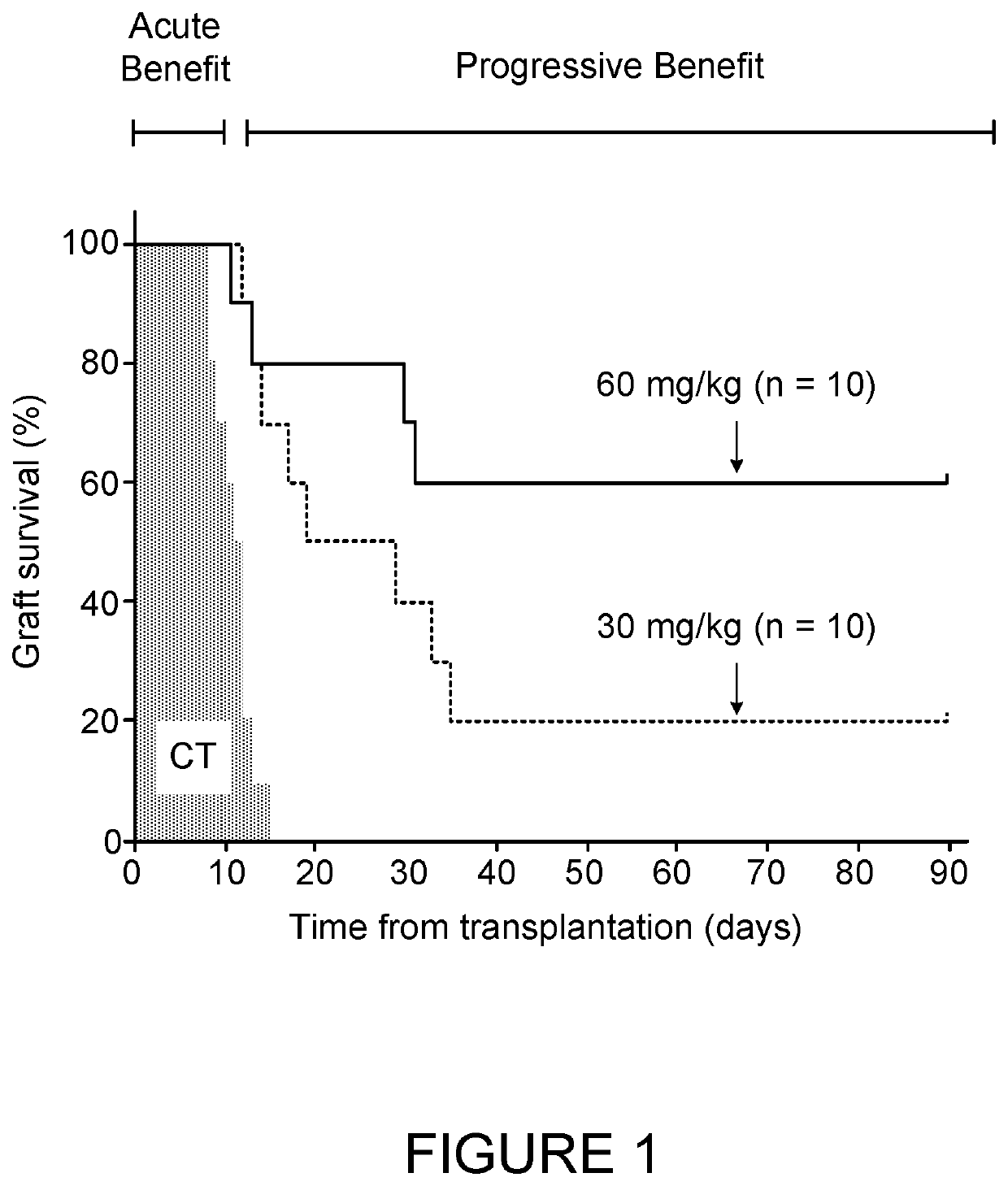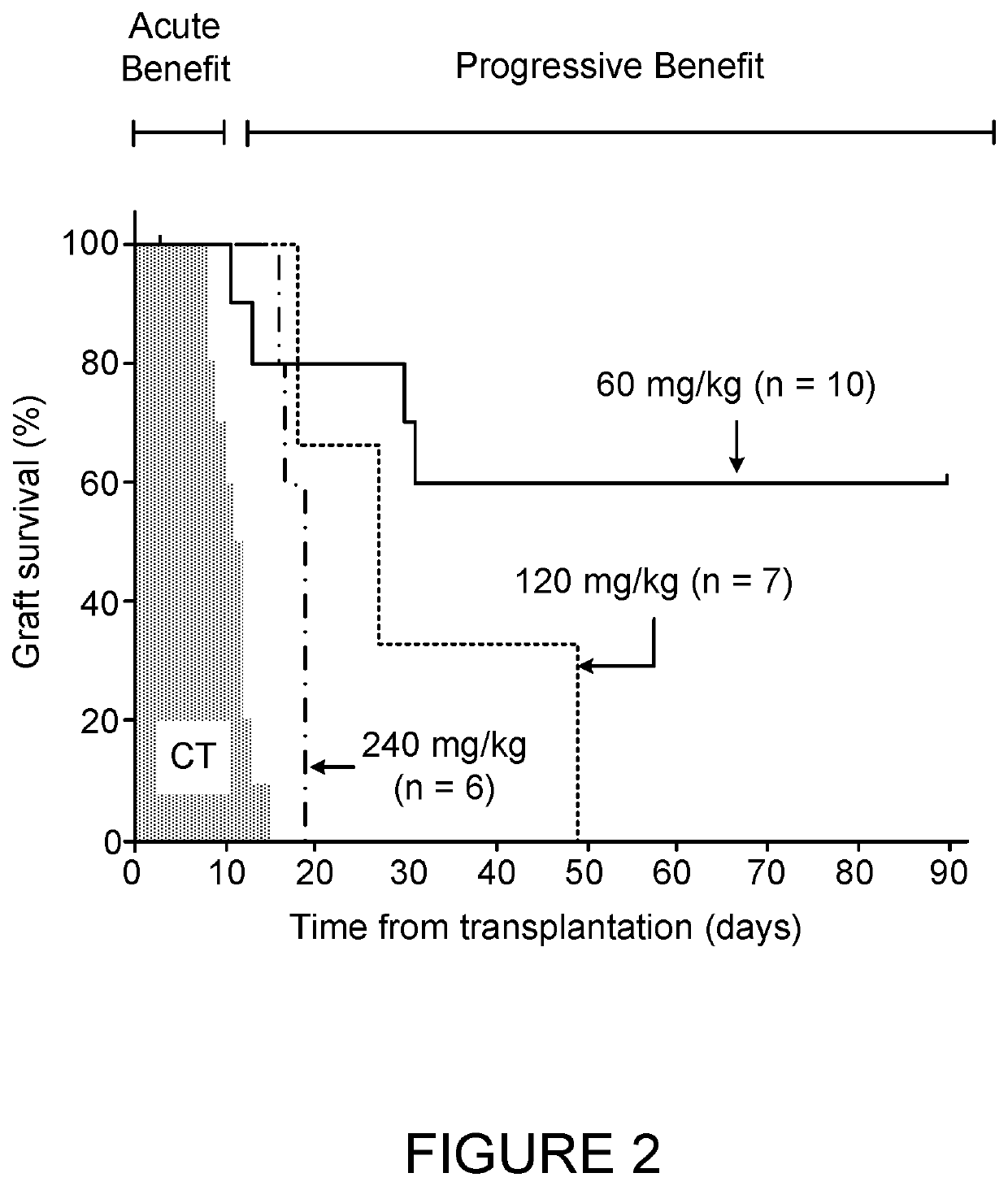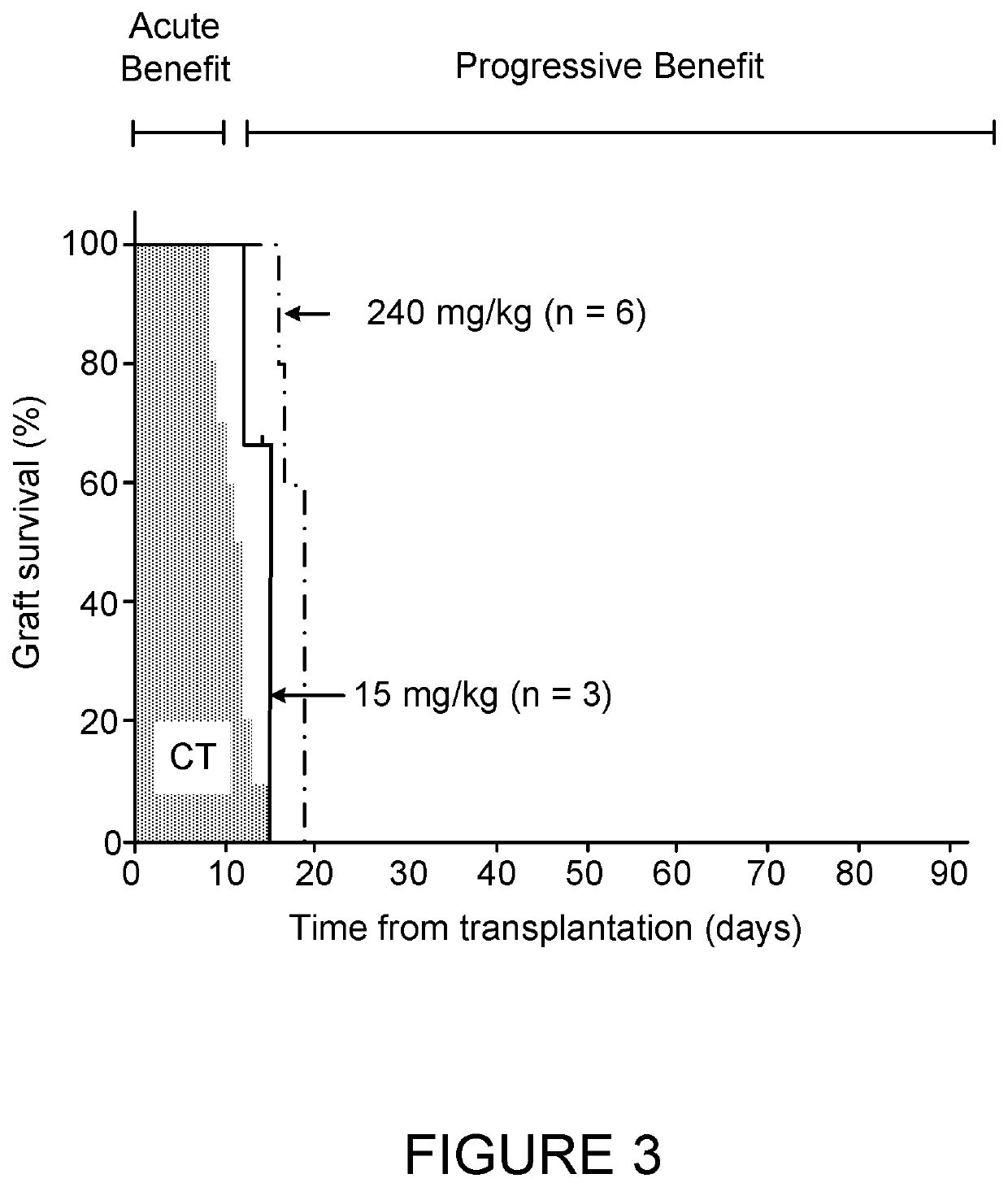Multiple-variable dose regimen for treating diabetes
a multi-variable, dose-based technology, applied in the direction of metabolism disorder, spray delivery, peptide/protein ingredients, etc., can solve the problems of continuous immunosuppression, insufficient number of functional beta cells, continuous autoimmune destruction of beta cells, etc., to prolong the survival and function of transplanted islets, and reduce inflammation. , the effect of prolonging the survival of the transplanted isl
- Summary
- Abstract
- Description
- Claims
- Application Information
AI Technical Summary
Benefits of technology
Problems solved by technology
Method used
Image
Examples
example 1
AAT Affects Islet Survival in an Optimum Curve
[0115]The effect of several doses of AAT on islet survival was examined. Each group of islet transplanted mice received a different AAT dose at the same administration frequency of once every three days as described hereinabove.
[0116]FIG. 1 shows the effect of the standard dose of 60 mg / KgBW compared to a half dose of 30 mg / KgBW. FIG. 2 shows that effect of higher doses of 120 and 240 mg / KgBW compared to the standard dose of 60 mg / KgBW. FIG. 3 shows the effect of two extreme high (240 mg / KgBW) and low (15 mg / KgBW) doses.
[0117]As shown, islet grafts in all untreated recipients (FIGS. 1-3, CT) failed to normalize blood glucose levels (indicating graft rejection) already before 20 days after transplantation. The standard 60 mg / KgBW resulted in prolonged graft survival, with 60% of the mice presenting indefinite graft survival of 90 days and more. Reducing the standard dose to a half dose of 30 mg / KgBW resulted in a decrease of the success r...
example 2
Effect of Multiple Fixed AAT Dose on Islet Survival
[0119]In view of the different protection afforded by high and low doses of AAT, it was examined whether replacing the fixed standard dose of 60 mg / KgBW with several lower doses administered at shorter intervals would be beneficial. Accordingly, mice received either single dose of 60 mg / KgBW. i.p or the same total amount of hAAT distributed as two or three separate rations. Tail blood was collected and serum hAAT levels were determined. As shown in FIG. 4A, the obtained mouse hAAT serum pharmacokinetics were similar to that reported in humans in that soon after administration circulating hAAT levels peaked (1,348.38±247.11 μg / ml), followed by dramatic reduction over the following 72 hours, reaching 103.98±31.67 μg g / ml. Dividing the standard dosage of 60 mg / KgBW to two or three portions given at prolonged time resulted in different circulating levels of hAAT. As shown in FIG. 4B, the 30 mg / Kg dose displayed the predicted circulating...
example 3
Effect of Multiple Variable AAT Dose on Islet Survival
[0121]The result presented in FIG. 1-4 above revealed an unexpected phenomenon of two distinct phases of AAT effect: an initial phase of about 14-20 days from grafting in which AAT provides significant protection of islet survival and a subsequent more prolonged phase with varying degrees of islet protection. In the first phase, the higher doses of 120 and 240 mg Kg / BW provided better protection, while during the second phase the lower dose of 60 mg / Kg BW was significantly advantageous. Accordingly, a dynamic dosage range was attempted (FIG. 5). From the first injection of 240 mg / KgBW a dose of 60 mg / KgBW was reached by reducing each does in a gradual manner. The last injection was followed by one more 60 mg / KgBW injection and then ceased. As is shown in FIG. 5, reducing the dose gradually from 240 mg / KgBW provided an approved protection for the grafted islets compared to the administration of 240 mg / Kg dose. These results suppor...
PUM
| Property | Measurement | Unit |
|---|---|---|
| body weight | aaaaa | aaaaa |
| body weight | aaaaa | aaaaa |
| body weight | aaaaa | aaaaa |
Abstract
Description
Claims
Application Information
 Login to View More
Login to View More - R&D
- Intellectual Property
- Life Sciences
- Materials
- Tech Scout
- Unparalleled Data Quality
- Higher Quality Content
- 60% Fewer Hallucinations
Browse by: Latest US Patents, China's latest patents, Technical Efficacy Thesaurus, Application Domain, Technology Topic, Popular Technical Reports.
© 2025 PatSnap. All rights reserved.Legal|Privacy policy|Modern Slavery Act Transparency Statement|Sitemap|About US| Contact US: help@patsnap.com



